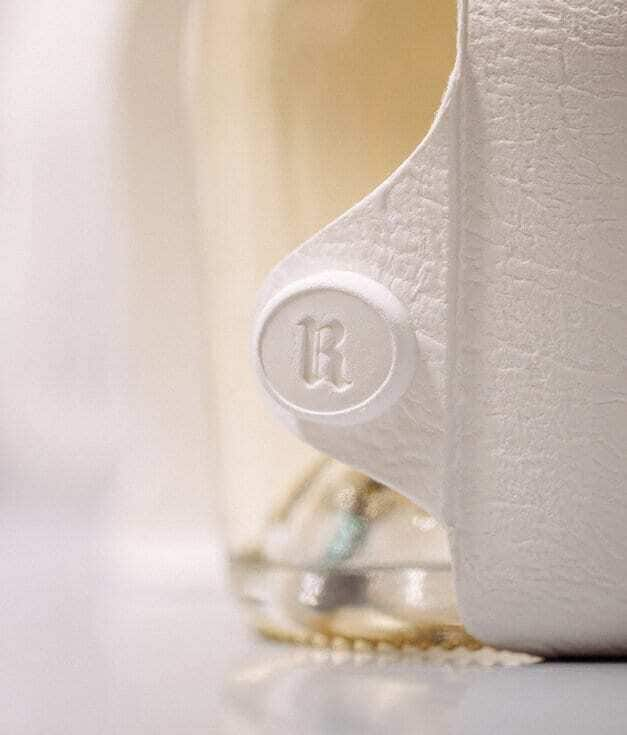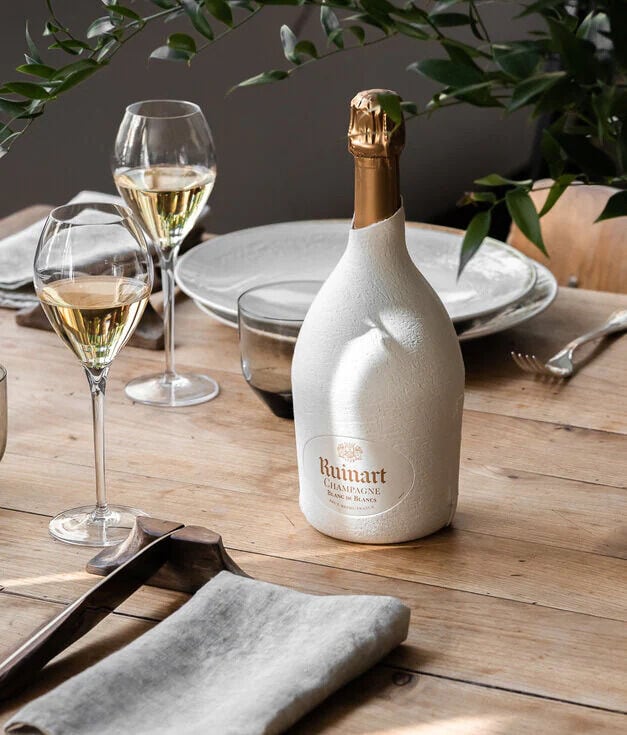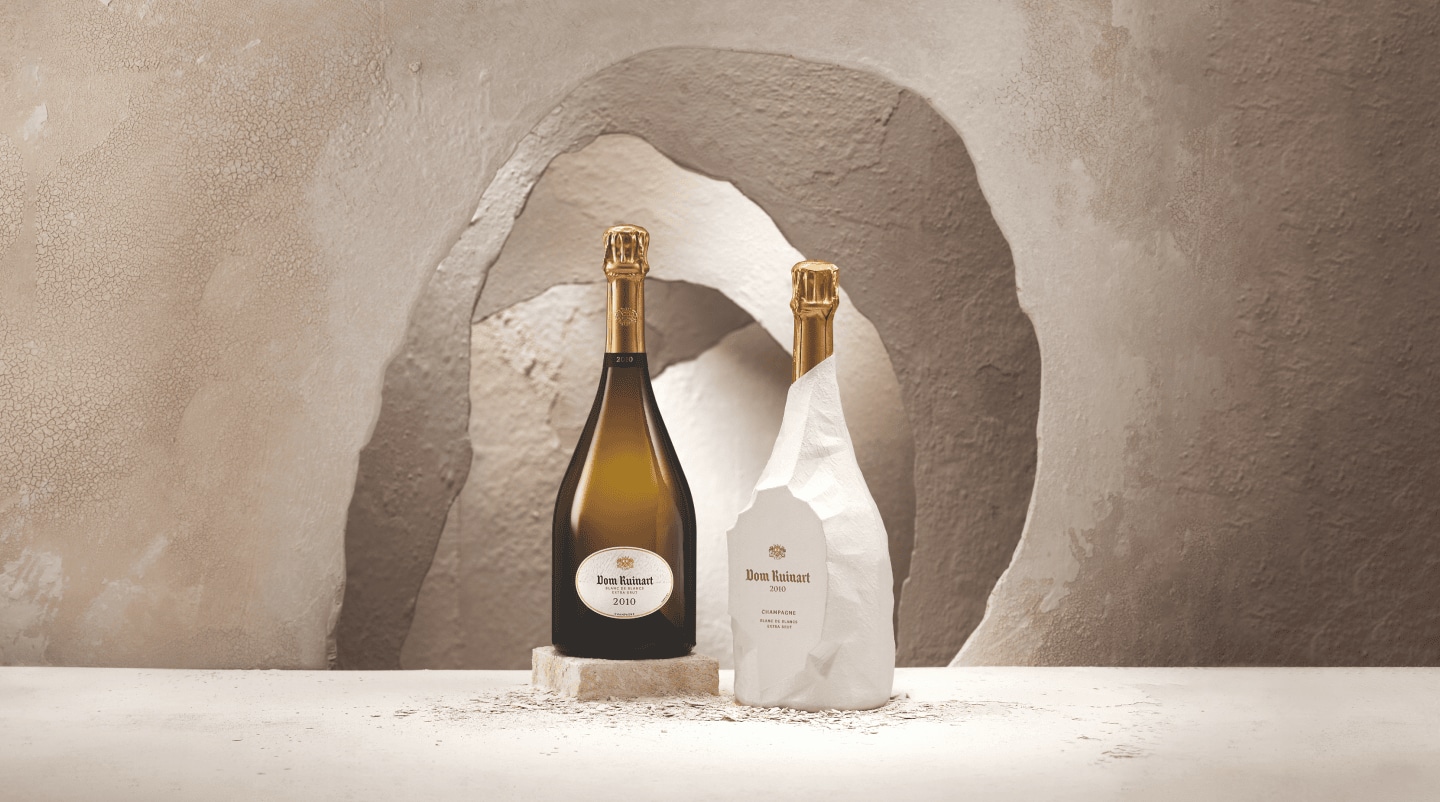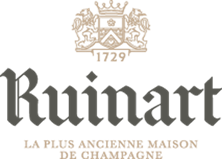
Ruinart supports the moderate consumption of wine and spirits through Moët Hennessy, a member of Wine in Moderation.
PLEASE DRINK RESPONSIBLY

Ruinart supports the moderate consumption of wine and spirits through Moët Hennessy, a member of Wine in Moderation.
PLEASE DRINK RESPONSIBLY
Since 1729, the first ever established Champagne House has looked to preserve its ancestral savoir-faire and carefully cultivate the soil its exceptional wines are rooted in. In light of the ever-growing environmental challenges, Maison Ruinart, entering its 4th century of existence, takes a decisive step forward in its commitment to the preservation of living soils and the transmission of know-how, art and culture.
Beyond necessity, sustainability is a source of innovation and a driving force of creativity for Ruinart.
Today, the Champagne House takes an unprecedented action, launching an eco-designed packaging, an alternative to the gift box.
Two years of research and development were needed to get back to the essential: a 99% paper ¹ and recyclable case, moulded to the shape of the bottle. This case is 9 times lighter than its predecessor ² and produced without incurring any airfreight, resulting in a 60% reduction in its carbon impact ³ according to the BEE (Bilan Environnemental des Emballages) and ADEME (Agence de l'environnement et de la maîtrise de l'énergie) methodology.
¹ Case made of 99% paper and 1% glue (on the labels).
² The second skin case weighs 40g compared to 355g for the previous gifting box.
³ Comparison of a carbon study between the second skin case and the previous gifting box: 295g eqCO₂ for the second skin case against 723g eqCO₂ for the gifting box.
The second skin packaging was developed with manufacturing partners, Pusterla 1880 and James Cropper. The manufacturer James Cropper was established in 1845, on the shores of the Lake District National Park between Scotland and England, where it developed a unique savoir-faire. The family business is specialized in paper, respectfully leading innovations amidst a landscape classified as a UNESCO World Heritage site. The water indispensable to the creation of the second skin case is drawn from the site, 91% of which is clean enough to be released back into the river after manufacture. The result is obtained without the use of plastic.
Maison Ruinart puts its leadership role in service of sustainable development. This approach results from multiple technological challenges, focusing the efforts on a unique material—namely cellulose fibers, or pulped paper.
Where a big gift box made sense in the past, an entirely recyclable cloak composed of 99% natural wood fibers is a more suitable fit today. The sustainable innovation of the second skin case extolls a return to nature and to the natural: it aims to reduce waste and recycle materials without denaturing experience or taste.
A direct homage to the Crayères, the historic wine cellars of the Maison in Reims classified as a UNESCO World Heritage site since 2015, the minimalist paper case features a silky yet textured surface finely engraved.
The shape of the case perfectly enhances the curves of the iconic bottle, inherited from the 18th century, while highlighting the roundness of the wine. Imprinted with the Maison’s monogram, the paper’s closure system is at once discreet and intuitive.
Light, aesthetic and functional, the second skin case suggests a new set of gesture: it is inspired by the manner in which maîtres d’s wrap a white serviette around bottles of champagne.
Suitable for storage for several months in a fridge, the case can withstand the humidity of a cellar, and up to three hours in an ice bucket.
So rather than being disposed of immediately, the case may be retained until serving or longer to maintain the integrity of the wine.
In 2020, Ruinart revolutionised its packaging with the new "Second Skin" case, which replaced the unitary boxes. This sustainable innovation required two years of research and development. Dom Ruinart’s chalk wrap offers a new interpretation of this innovation. Velvety soft to the touch like chalk, with its gentle reliefs and crevices crisscross, as if carved directly into chalky rock. A hand-applied gold marking enhances its exceptional character. The discreetly engraved 1729 on the fastening button indicates the heritage of Maison Ruinart, the world’s first champagne House.
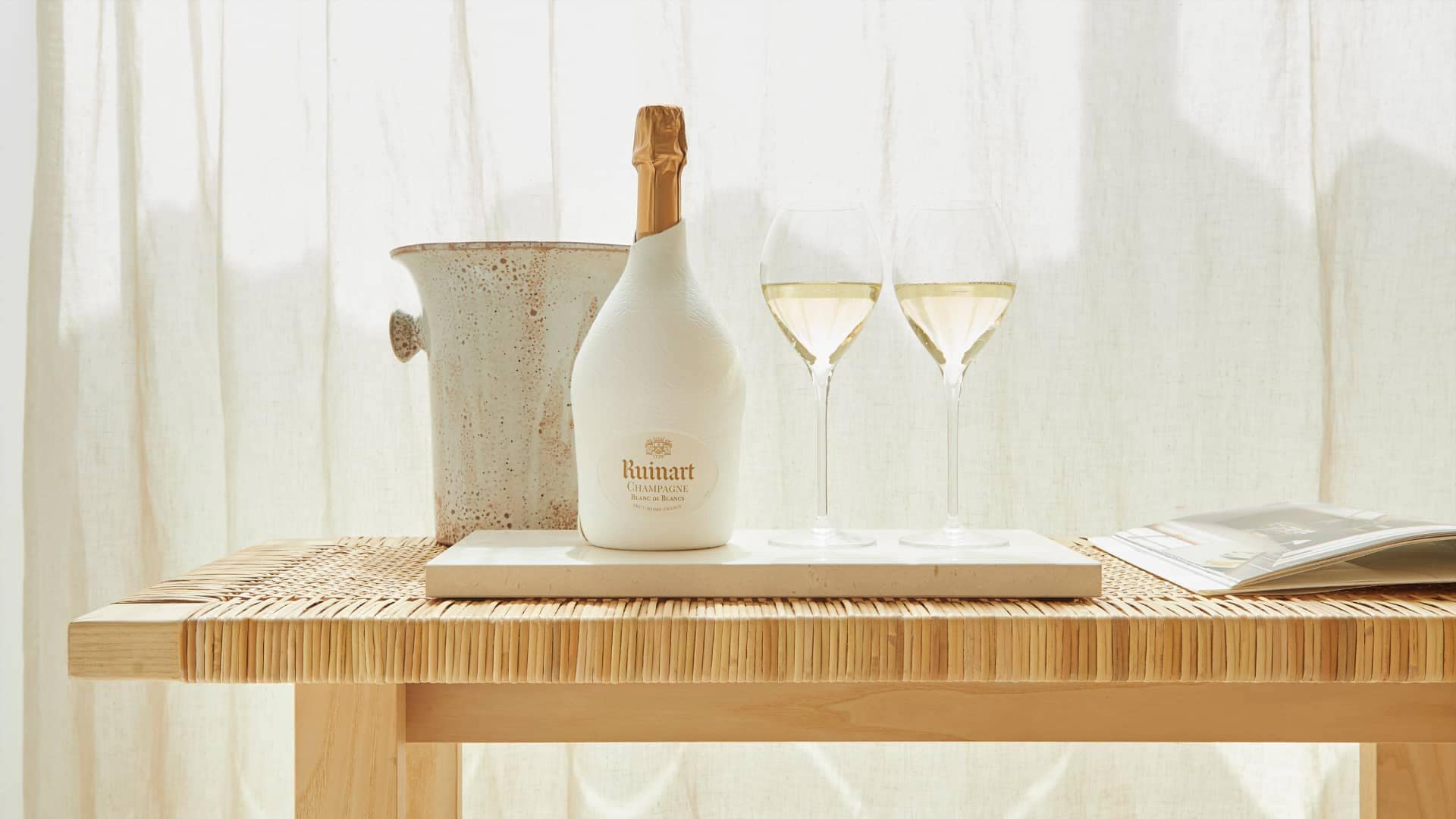
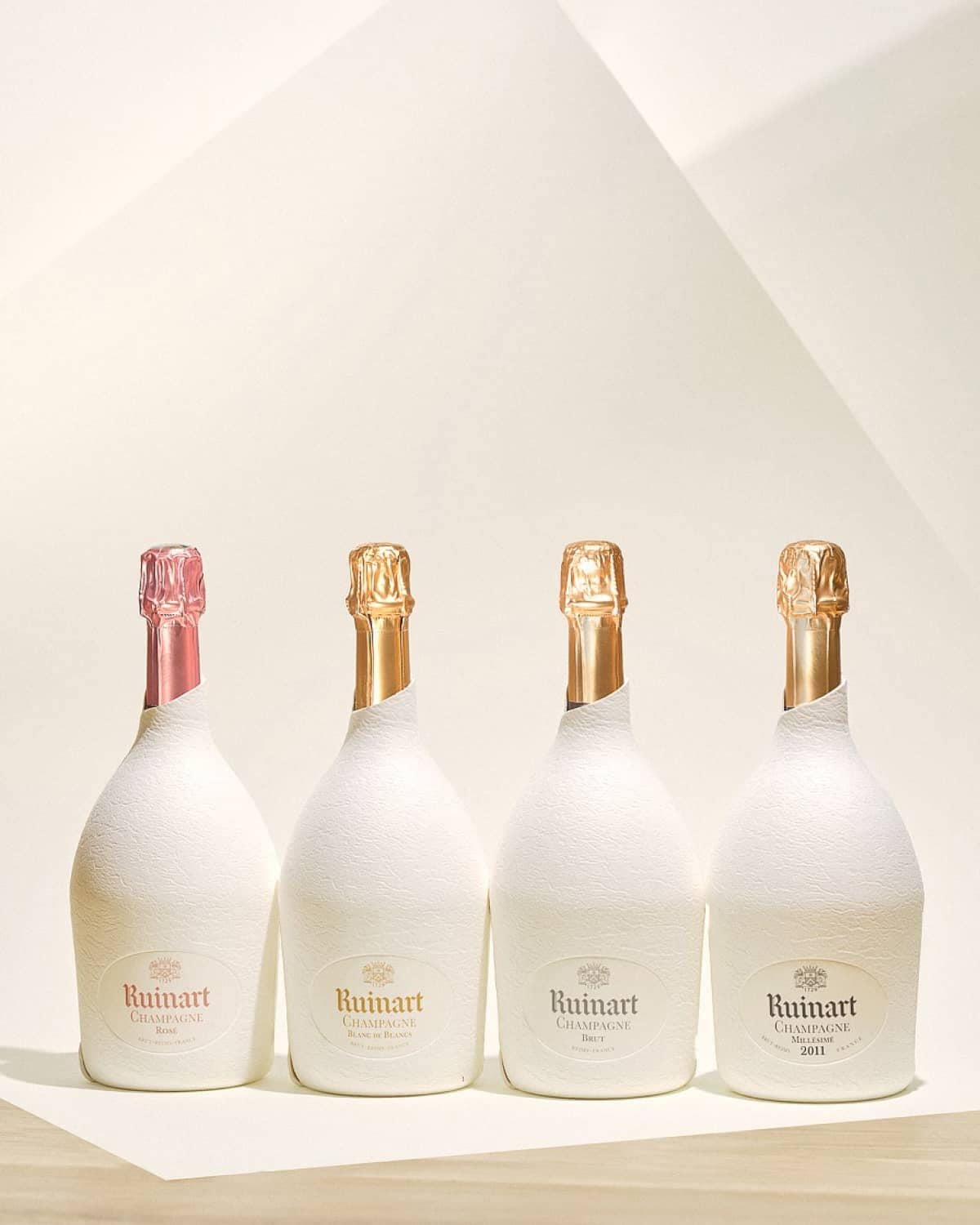
.jpg)
